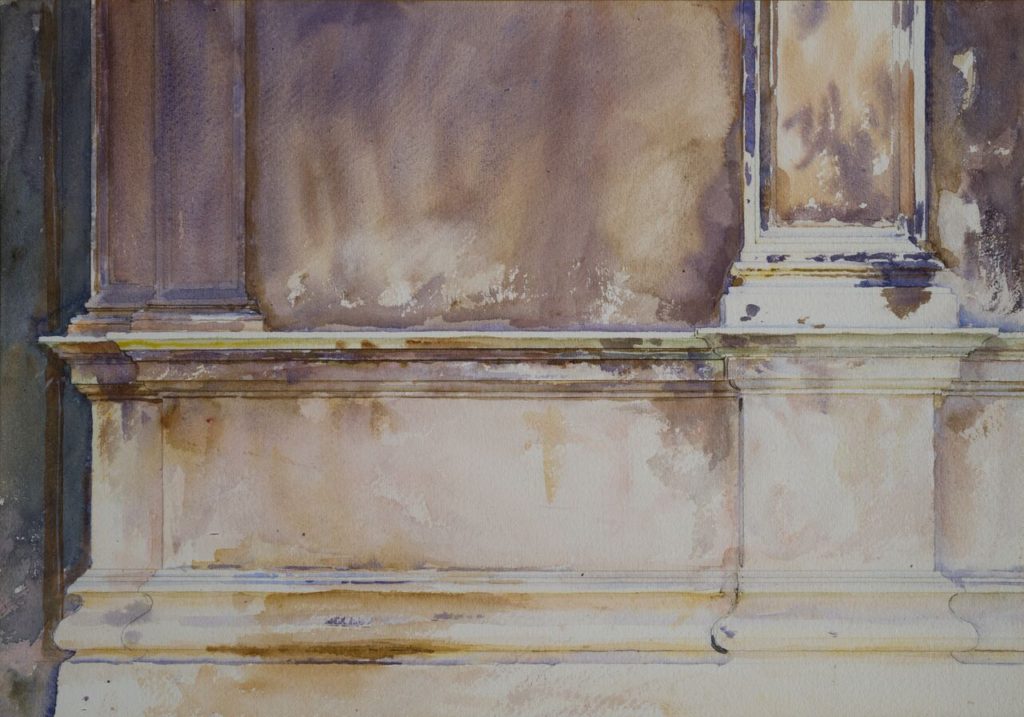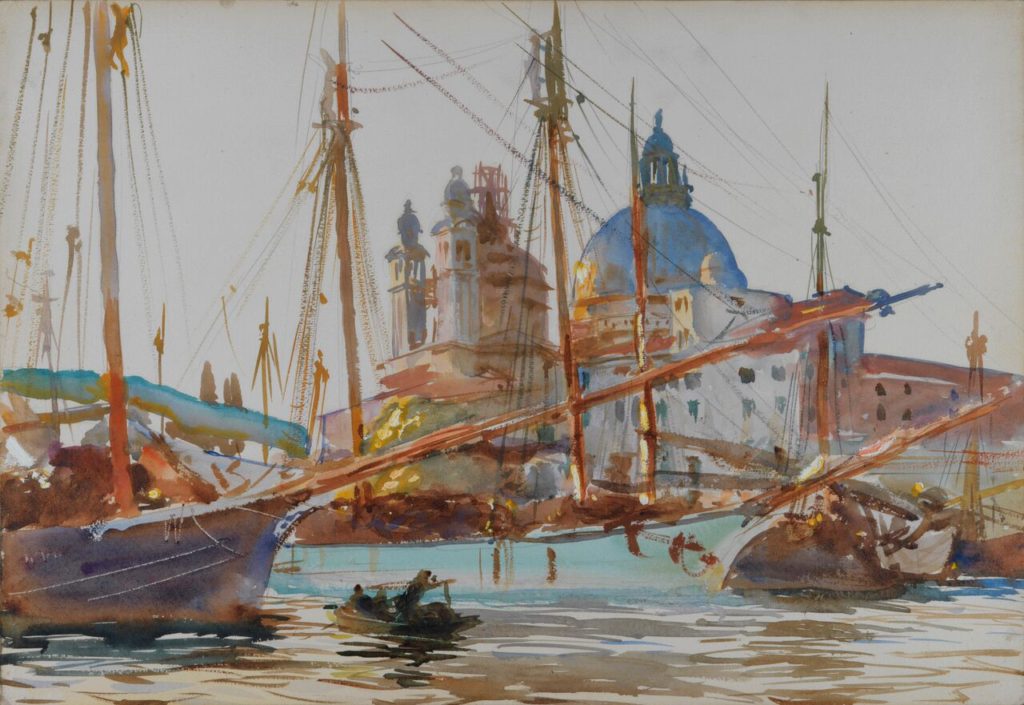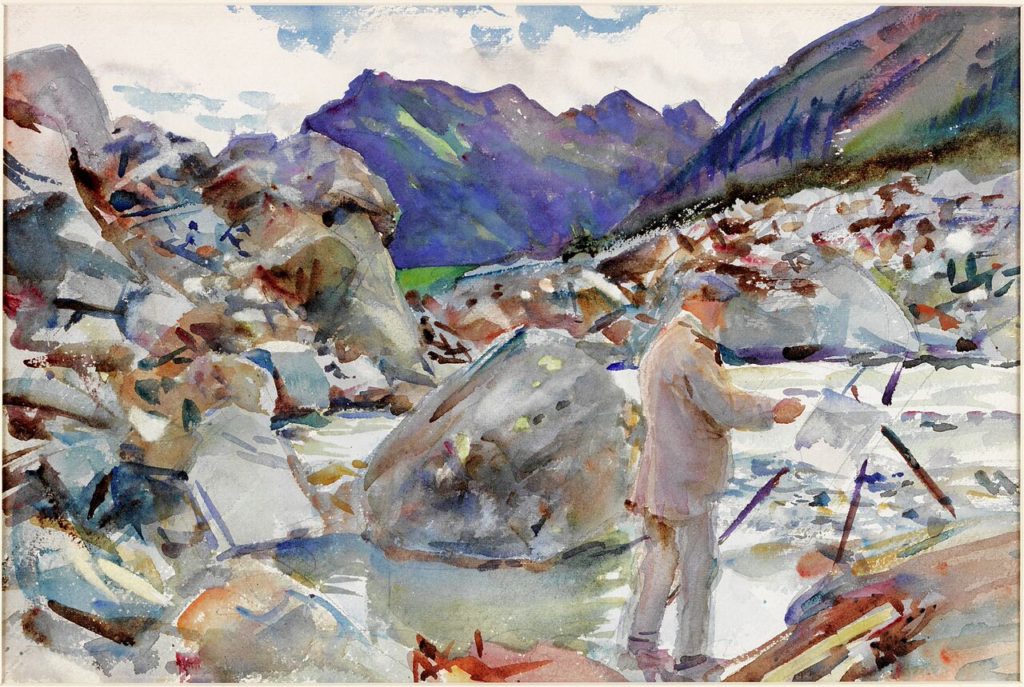Sargent: The Watercolours
Until 8th October 2017
Dulwich Picture Gallery, London
John Singer Sargent (1856-1925) is an artist whose name conjures visions of grand portraits on enormous canvases, depicted in his inimitable signature style. But there was so much more to him than that, and just to be remembered as a society portraitist would almost certainly have been an insult to him. Sargent had a somewhat nomadic childhood, his family moving from their native America around Europe. His love of travel remained with him until his death, but early on in his career when it was clear he was destined to make his name painting the rich and famous, and so his time was restricted by studio work. This exhibition explores his love of travelling, and the inspiration he drew from the places he visited. Looking at these very personal snapshots, we get to know Sargent in a way that we never can as a portrait painter.
Rome: An Architectural Study (c. 1906-7) shows a detail of the exterior of an unnamed building. There is nothing particularly interesting in the area that Sargent has chosen to paint, but there is charm in the classicised base of the building, with its plinthed pilasters and simple stringcourse. Watercolour has been used to full effect here to describe the dirt on the building and the texture of the paper mimics the roughness of the stone. I suppose it puts forward the idea that Sargent saw beauty in the most mundane of things, even a wall was worth painting.

Rome: An Architectural Study (c. 1906-7) by John Singer Sargent, watercolour on paper over pencil, Museums & Galleries, City of Bradford MDC
The Church of Santa Maria della Salute, Venice (c.1904-9) is a beautiful watercolour that has a sense of immediacy and movement. It is a snapshot of life on the busy Grand Canal of Venice, and Sargent’s view is packed with the vertical and horizontal masts and ropes of boats. The five main uprights divide the scene, through which diagonal lines converge. I love the colours, that quintessential turquoise of Venice’s canals and the golden light that bathes everything in warmth. Sargent’s viewpoint (presumably from a boat) is low, and he has selected what to include in the scene with consideration. Yet there is something so instantaneous about it, a fleeting moment the view will transition.

The Church of Santa Maria della Salute, Venice (c. 1904-9) by John Singer Sargent, watercolour on paper, © Calouste Gulbenkian Foundation, Lisbon. Photo: Catarina Gomes Ferreira
I love A Glacier Stream in the Alps (c. 1909-11), a watercolour loaned by the Laing Art Gallery, I think it encapsulates what it is to be a painter in nature. Sargent holidayed in the Alps with friends and fellow artists, painting en plein air. His attraction to water in landscape is clear in the way he captures it, the glassy surfaces add movement and reflect the natural light – very different to the staged, spotlighting of his portraits. Looking at this up close, you can see every stroke and layer of watercolour. It would be easy to see the influence of Impressionism in Sargent’s work, but I think that there is more beneath his works. While there is some abstraction of form, he doesn’t loose the realism.

A Glacier Stream in the Alps (c. 1909-11) by John Singer Sargent, watercolour on paper, over preliminary pencil, 33.3 x 49.5cm, Laing Art Gallery, Newcastle-upon-Tyne/Bridgeman Images
The 80 paintings on display here are like personal photos from Sargent’s travels, showing us what he saw and and experienced.
